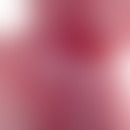Synonym(s)
DefinitionThis section has been translated automatically.
The yellow-brownish greenish wax obtained from the leaves of the carnauba palm (Copernica prunifera Mill. also C. cerifera), which is native to Brazil, is the hardest natural wax.
Carnauba wax is authorised in the EU as a food additive under the number E 903.
Like all other waxes, carnauba wax is insoluble in water, hardly soluble in ethanol, but soluble in acetone, petrol and other organic solvents. Carnauba wax adheres well to surfaces and gives surfaces gloss and colour intensity.
In the production of carnauba wax, the wax is brushed off the leaves of the wax palm. It is then melted, cleaned and bleached if necessary.
IngredientsThis section has been translated automatically.
Carnaubaic acid, cerotic acid, cerotic acid myricyl ester and other hydrocarbons.
You might also be interested in
Elimination and metabolismThis section has been translated automatically.
Carnauba wax is considered harmless. It is not resorbed in the intestine and is therefore excreted unchanged.
Field of application/useThis section has been translated automatically.
Technical: Raw material for the industrial production of polishes e.g. shoe polish, polishing agent.
Carnauba wax is used in the food industry mainly for surface treatment of fruits to protect them from drying out. Carnauba wax is approved for the following foodstuffs:
- Confectionery and chocolate
- chocolate-covered biscuits,
- Nibbles and nuts
- Coffee beans
- Apples, pears, bananas, pineapples, avocados, mangoes, melons, citrus fruits, pomegranates and peaches
Pharmacy: Carnauba wax is used pharmaceutically as a coating for gastric juice resistant tablets.
Cosmetics: Carnauba wax is used in the production of cosmetics such as lip balms and lipsticks.
Undesirable effectsThis section has been translated automatically.
In rare cases contact allergic reactions to lipsticks have been described.
Note(s)This section has been translated automatically.
Fruits whose surface has been treated with carnauba wax (applies mutatis mutandis to other waxes) bear the indication 'waxed'.
LiteratureThis section has been translated automatically.
- Alrowaishdi F et al (2013) Allergic contact cheilitis caused by carnauba wax in a lip balm. Contact dermatitis 69:318-319.
- Barman K et al (2014) Influence of putrescine and carnauba wax on functional and sensory quality of pomegranate (Punica granatum L.) fruits during storage. J Food Sci Technol 51:111-117.
- Milanovic J et al (2010) Microencapsulation of flavors in carnauba wax. Sensors (Basel) 10:901-912. Nart V et al. (2017)
- Carnauba wax as a promising excipient in melt granulation targeting the preparation of mini-tablets for sustained release of highly soluble drugs Mater Sci Eng C Mater Biol Appl 70(Pt 1):250-257.




